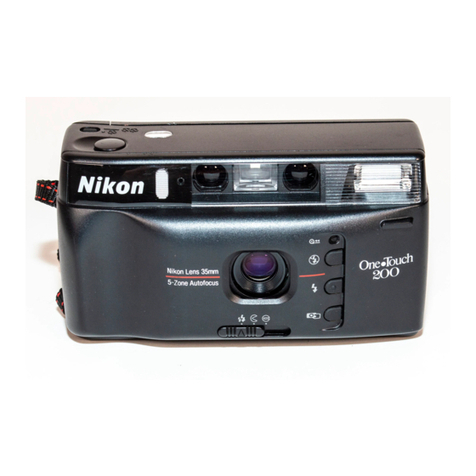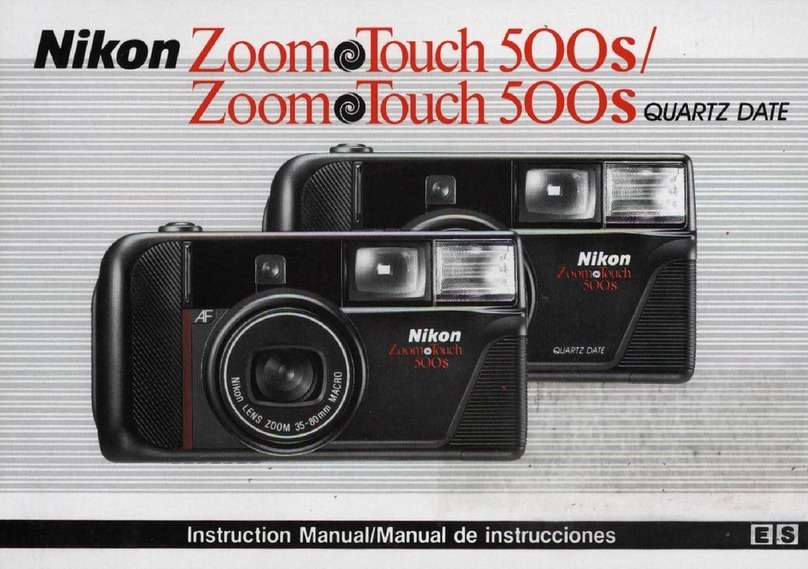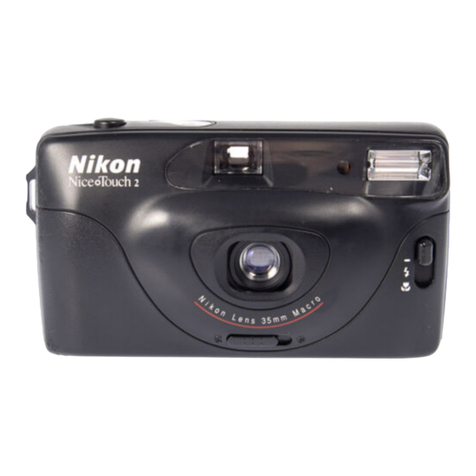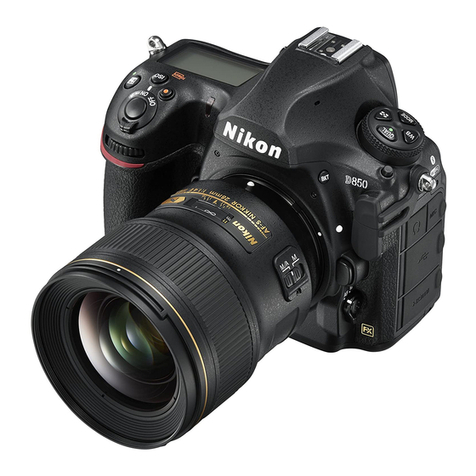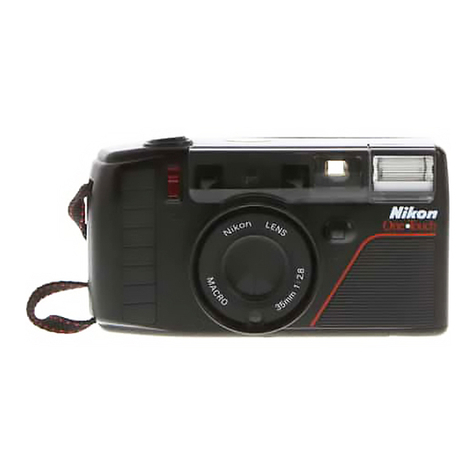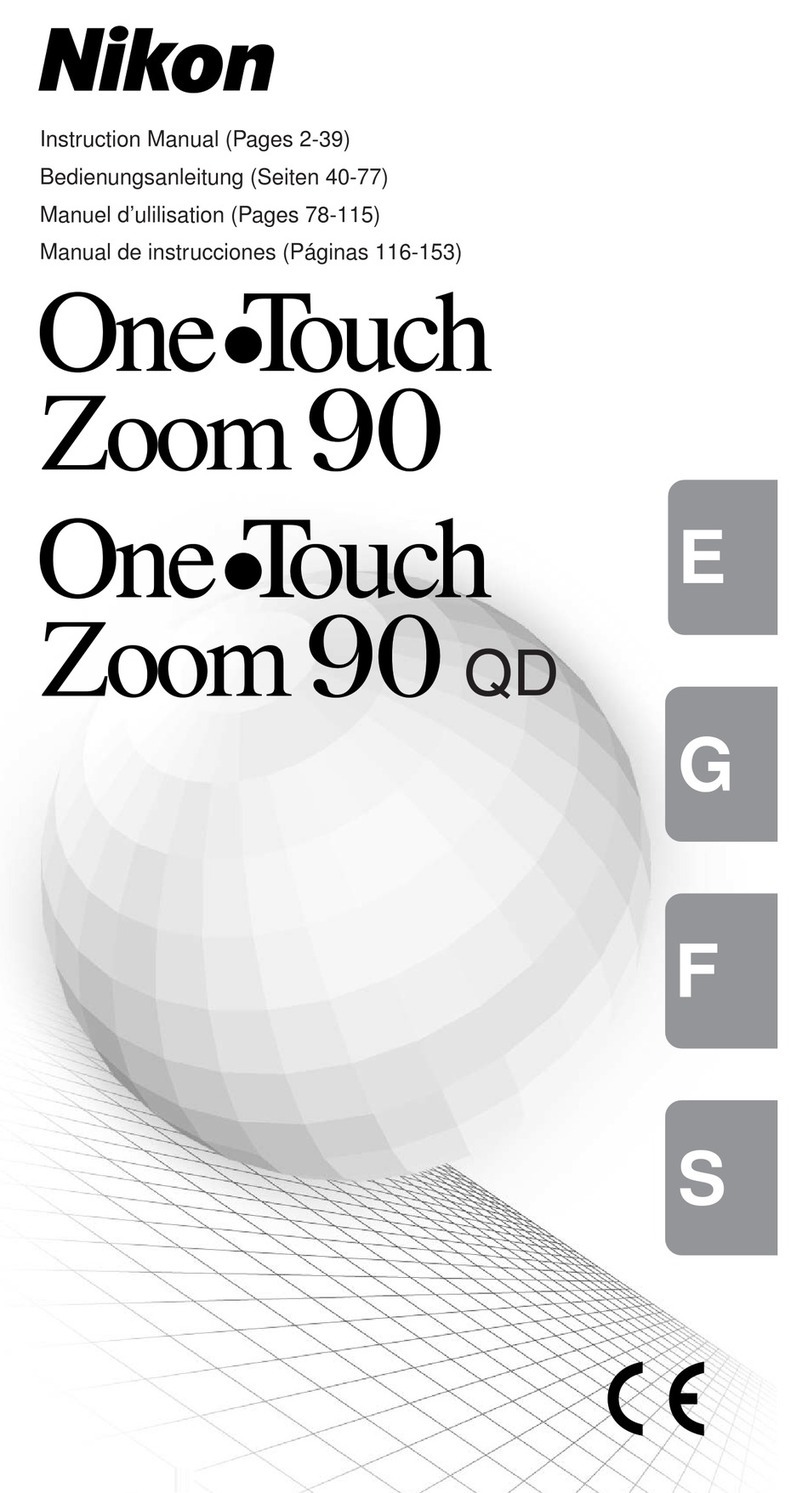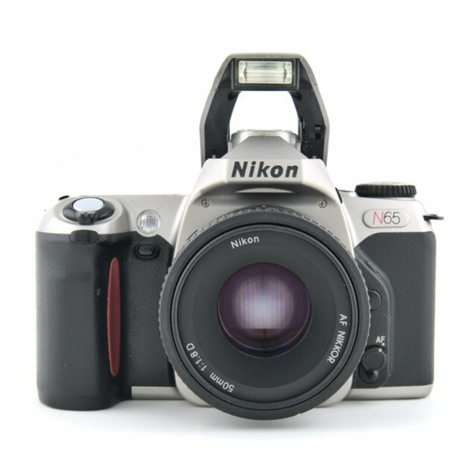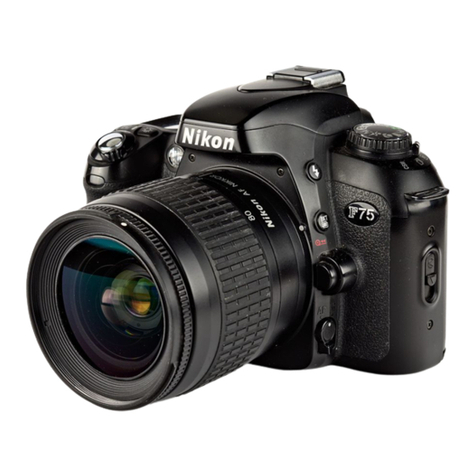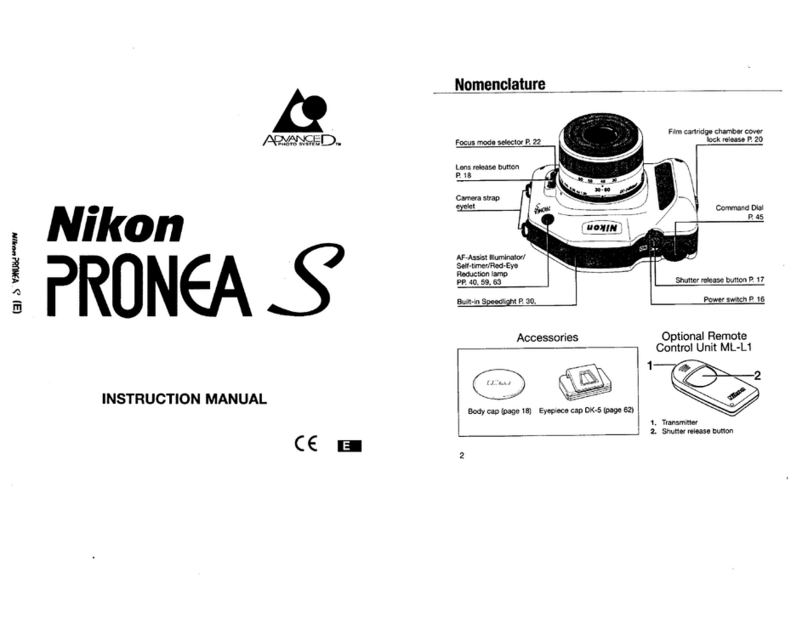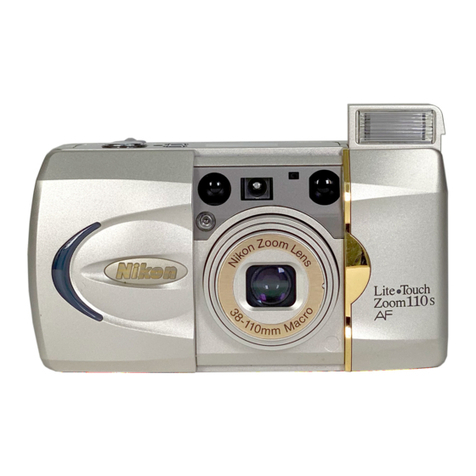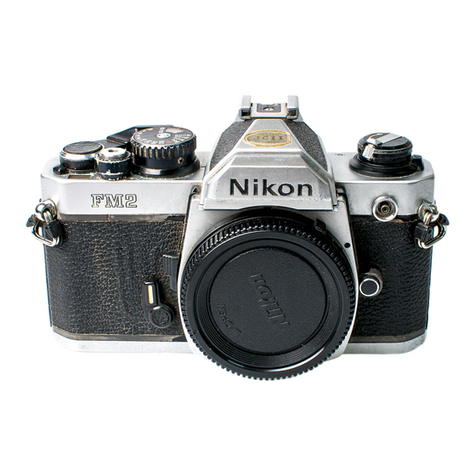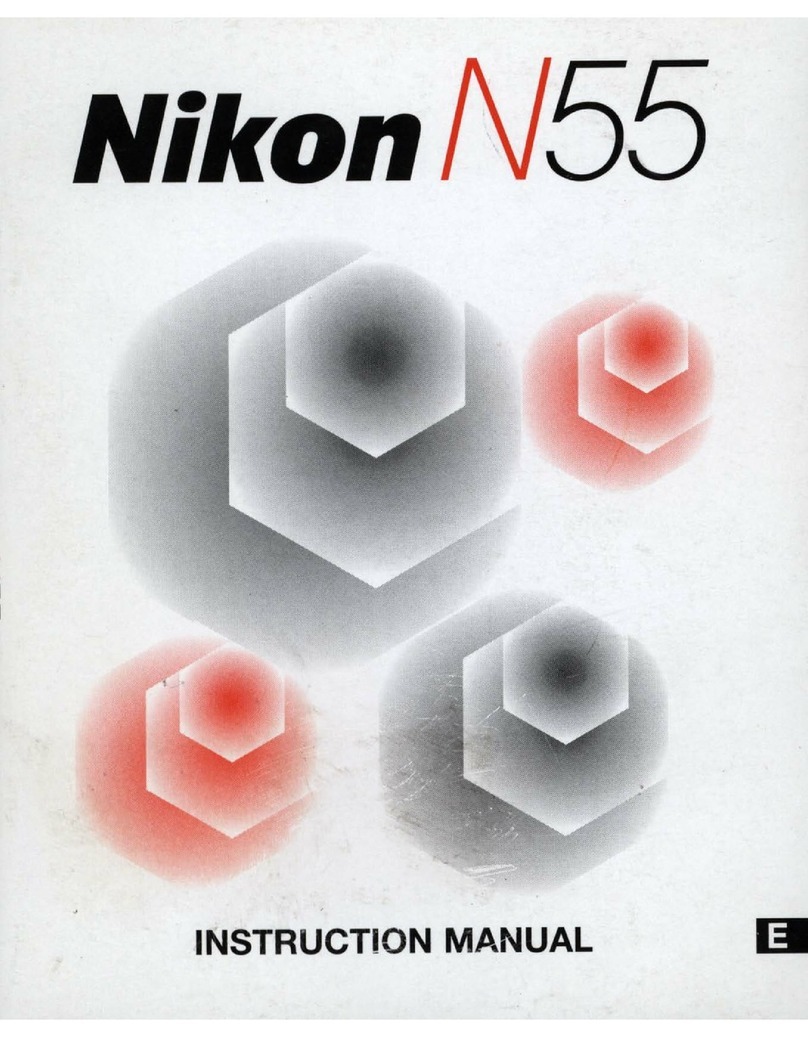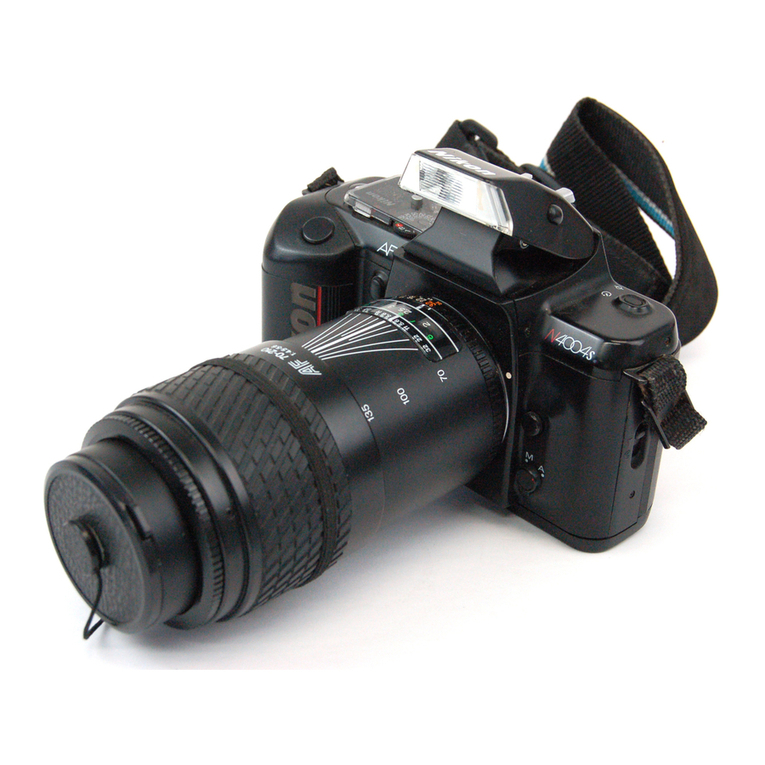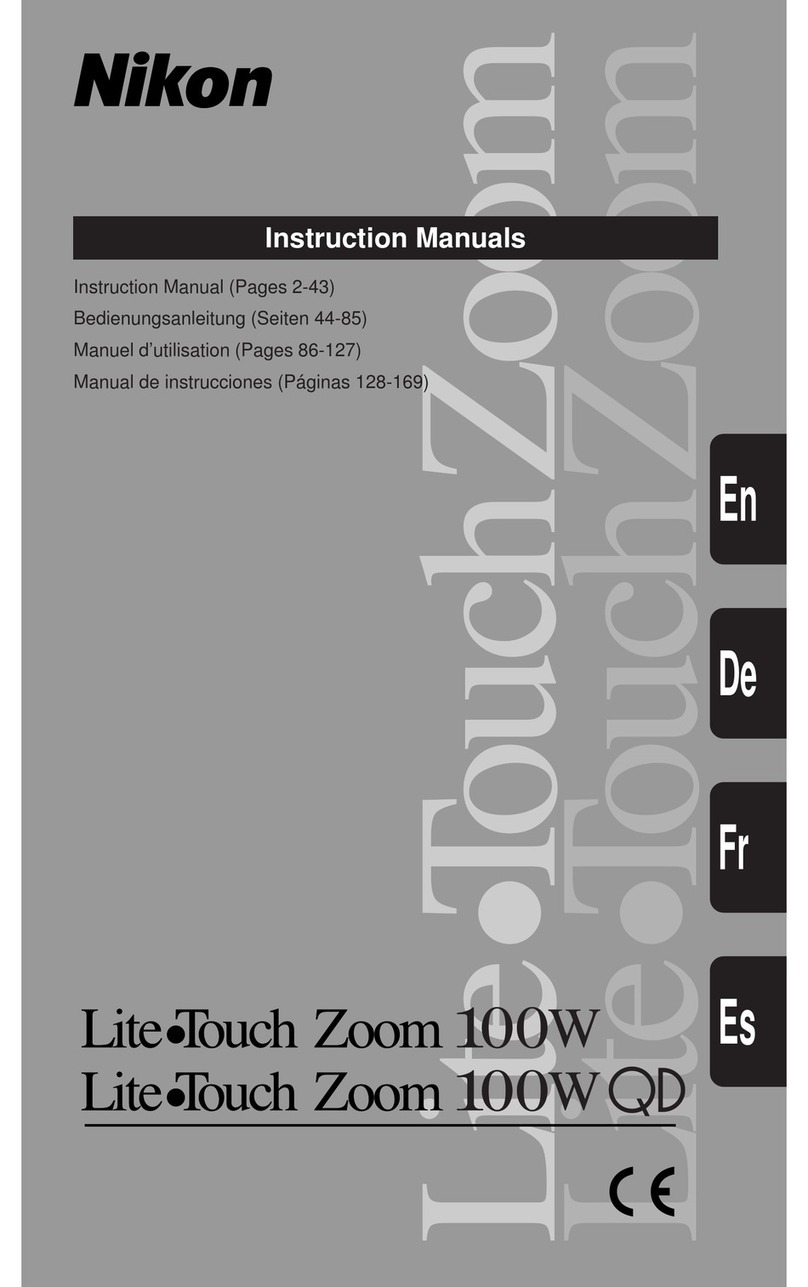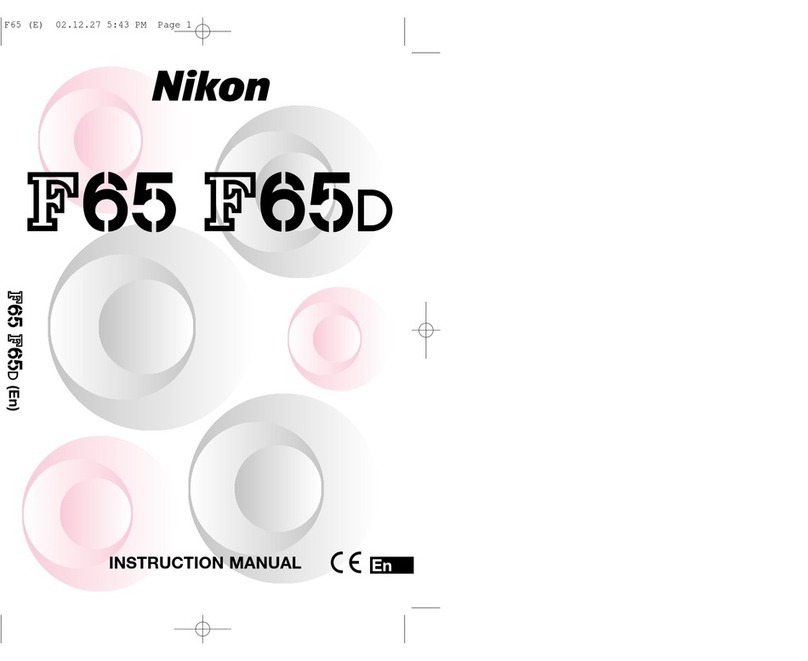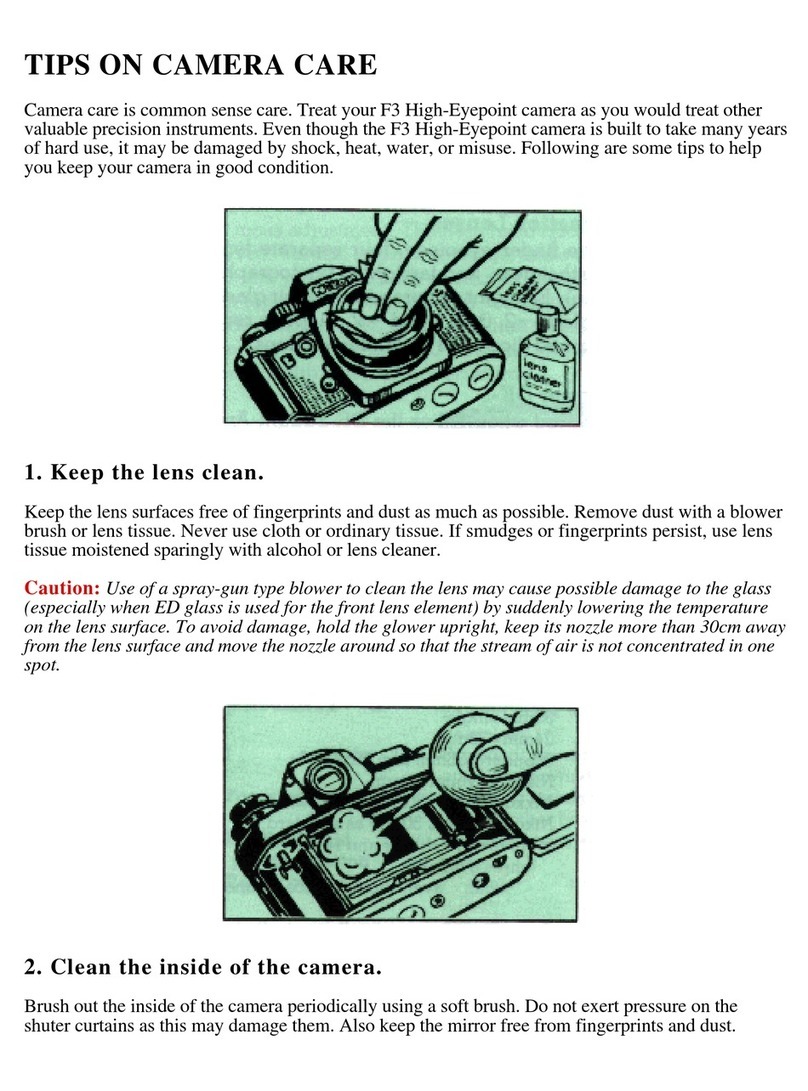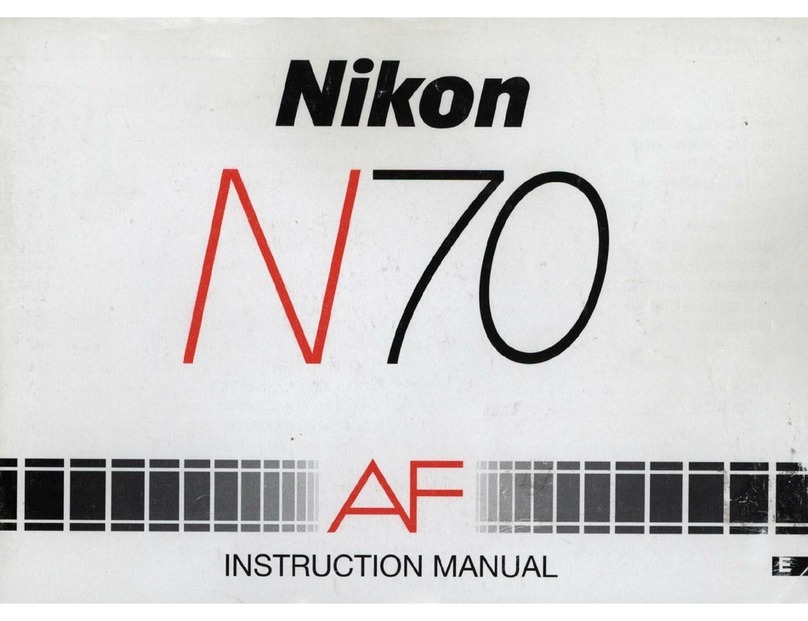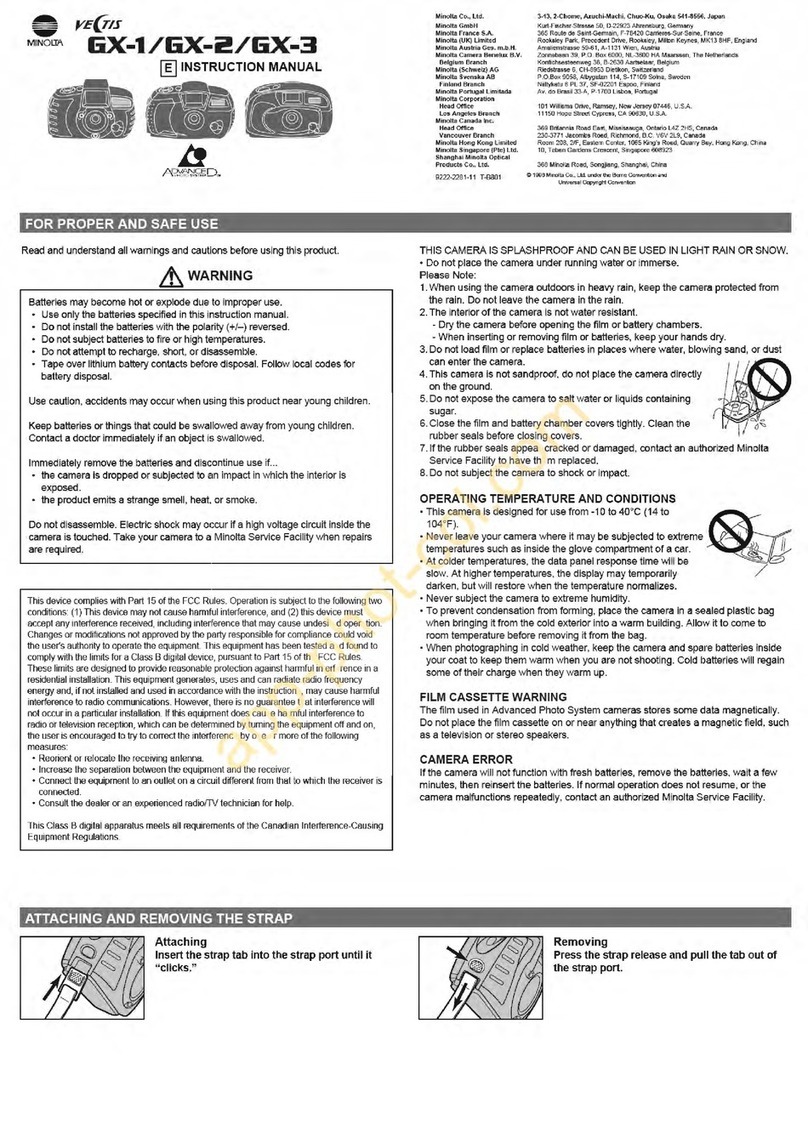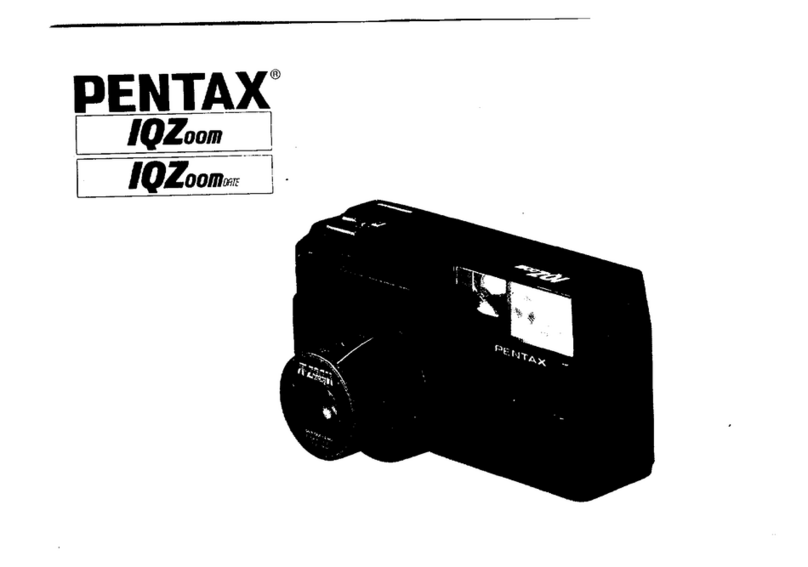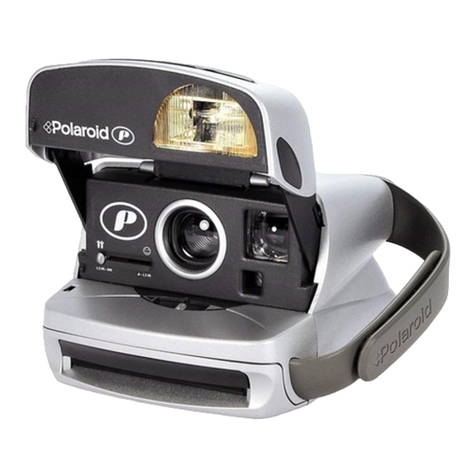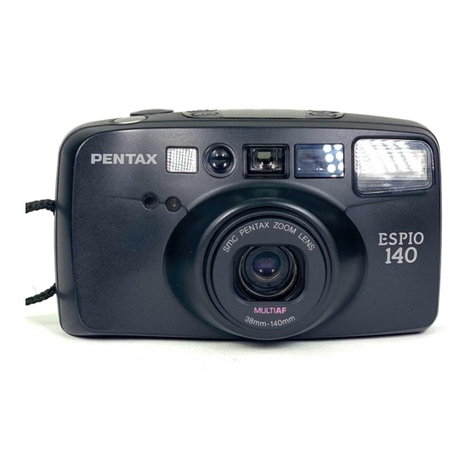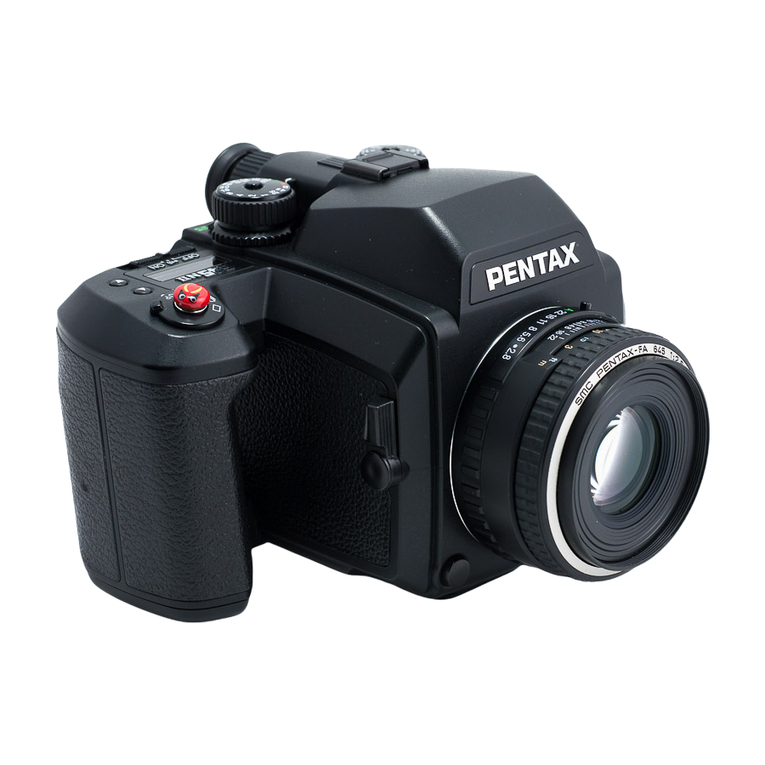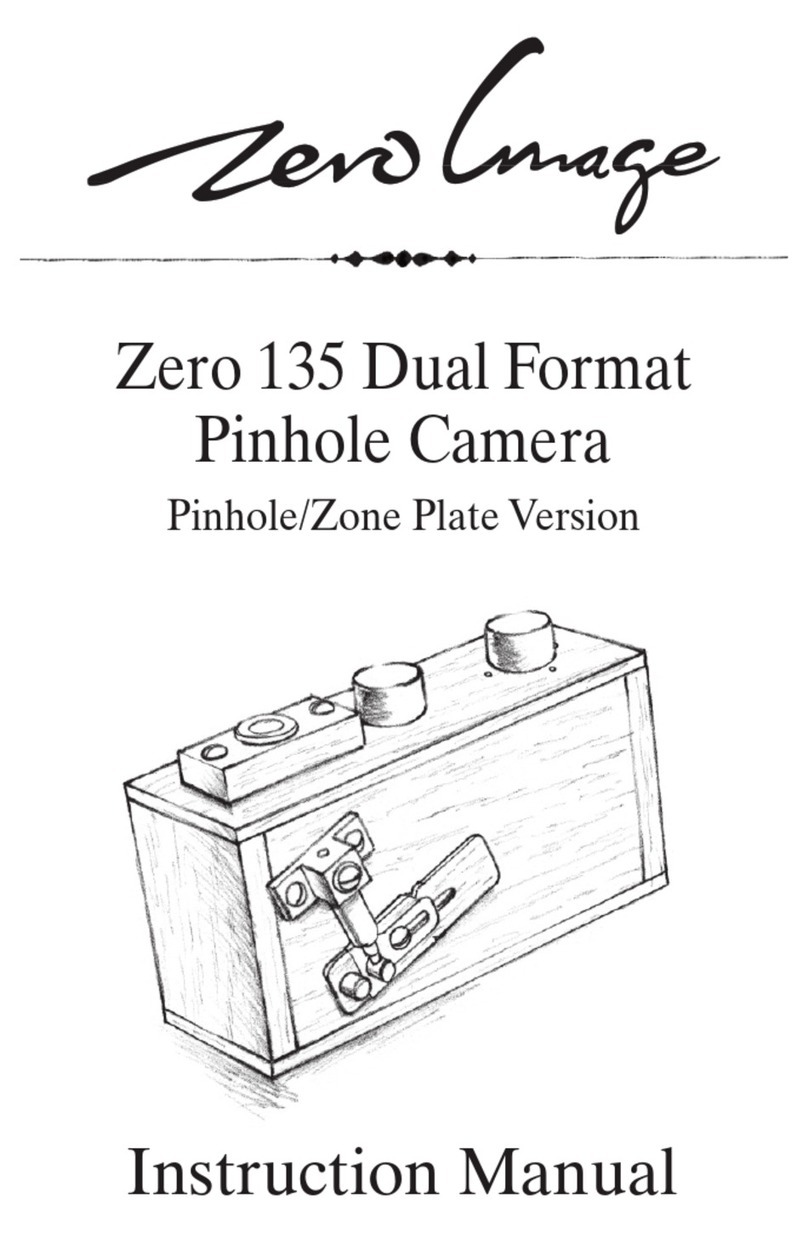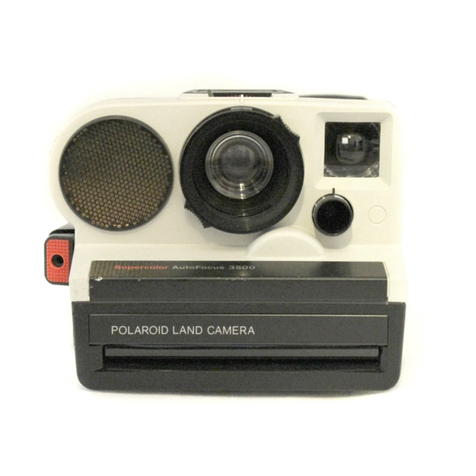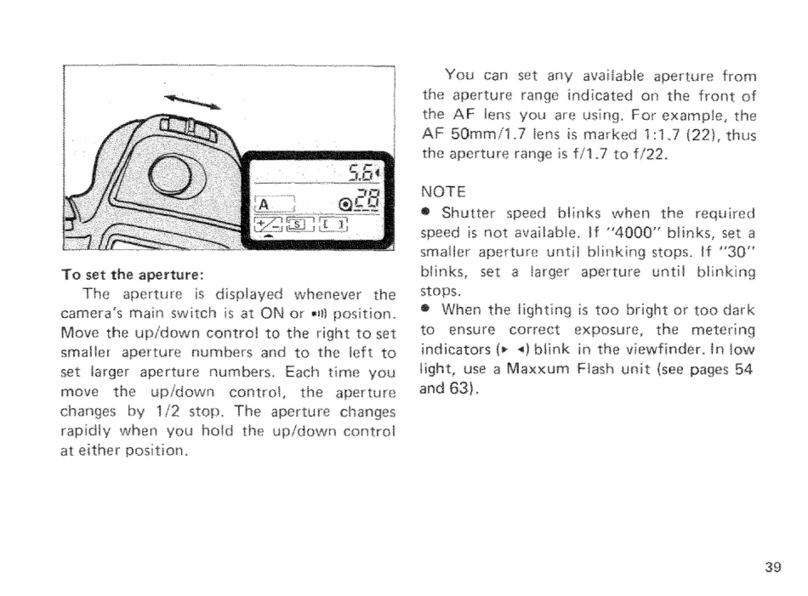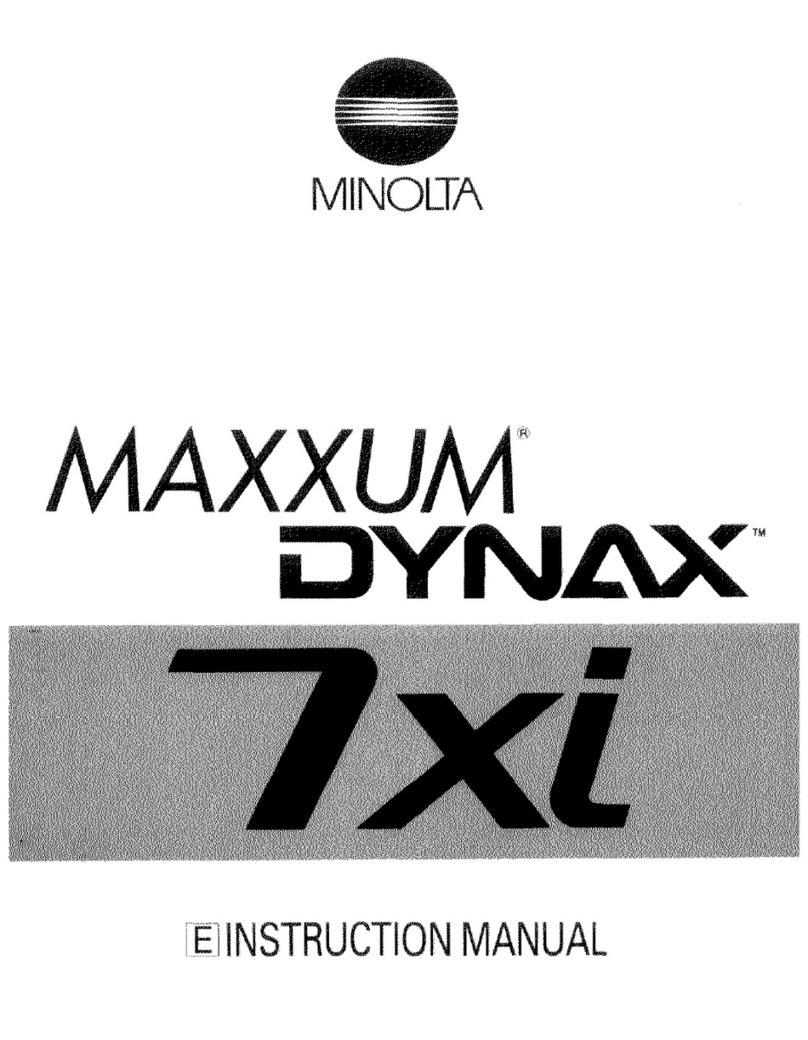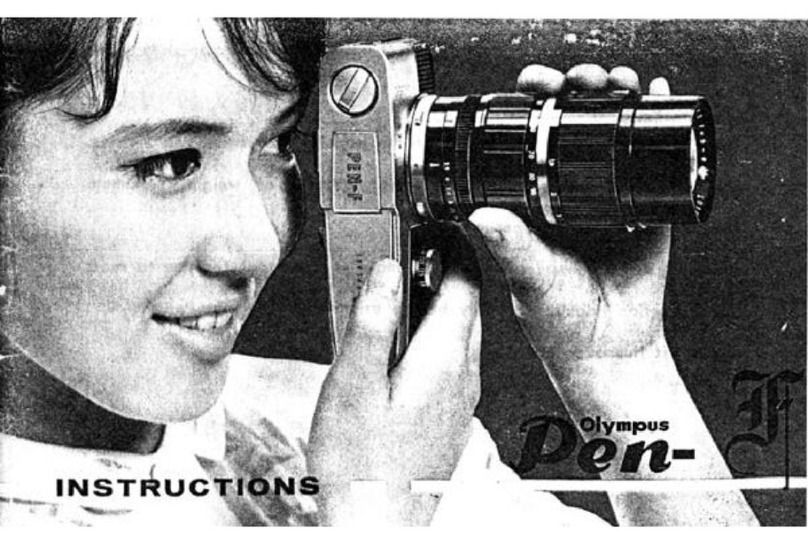-CONTROLS
IN
DETAIL-continued----------
The F3 High-E
yepoint
camera
has
two
separate
settings
for time
exposures.
On
"B,"
the
shutter
remains
open
for
as
long
as
the
shutter
release
button
is
depressed.
On
"T,"
the
shutter
stays
open
until
the
dial
is
rotated
to
another
setting,
making
it
ideal
for
really
long
time
exposures.
Be-
ing
a
mechanical
setting, "T" will not
cause
battery
drain
regardless
of how
long
the
shutter
remains
open.
*
"X"
pr
ovides
a s
hutter
speed
setting
of 1/80
sec.
It
is
used
to
provide
prop
er
synchronization
with
electronic
flash
units oth
er
than
the
Nikon
dedicated
flash units.
The
amount
of
li
ght
r
eaching
the
film
plane
is
determined
by
a
combination
of
the
shutter
speed
and
the
lens
aperture.
Since
the
tw
o
are
interrelated,
different
combi-
nations
will
give
the
same
degree
of
exposure
. A
one-step
change
in
shutter
speed,
or
a
one-stop
change
in
aper-
ture
setting,
will
either
halve
or
double
the
degree
of ex-
posure.
For
example,
a
shu
tt
er
speed
of 1/125
sec.
l
ets
in twi
ce
as
much
light
as
a
setting
of 1/250
sec
.,
and
on
ly
half
as
much
light
at 1/60
sec.
For
an
aperture
setting
of
fi
ll
, twice
as
much
light
as
fl
I6
and
half as
much
as
fl8,
is let in. Thus,
if
the
correct
exposure
for a
particular
picture-taking
situation is 1/125
at
fill,
then
1/60
at
fll6
or
11250
at
fl8 will
give
the
same
exposure.
18
T
he
following
table
illustrates the
interrelation
between
shutter
speed
and
aperture.
-----,-----,-----,-----,-----,
The
best
combination
will
depend
on
the
results you
want. Use fast
shutter
speeds
to
freeze
motion;
use
slow
speeds
to
produce
a
deliberate
blur.
(See
the
examp
le
pictures
on
the
opposite
page
.
).
Also, small
apertures
give
greater
depth
of field, while
large
apertures
restrict
sharp
focus to
the
main
subjec
t.
(See
page
26.)
A
good
rule
to follow in
preventing
camera
shake
is to
se
l
ect
a
minimum
shutter
speed
which is
the
reciprocal
of
the
focal
leng
th
of
the
lens
in
use.
For
examp
l
e,
when
using
a
normal
50mm
lens,
select
a
speed
no slower
than
1/60
sec
. (the closest
number
to 1/50). For a
500mm
super-telephoto,
use
no less
than
1/
500
sec
.,
and
so forth.
•To
make
a
mechanical
release, turn the
power
switch
off
and
make
sure
the LCD inside the finder
is
not
displayed. Then, trip the shuller using
the
backup
mechanical
release lever.




















